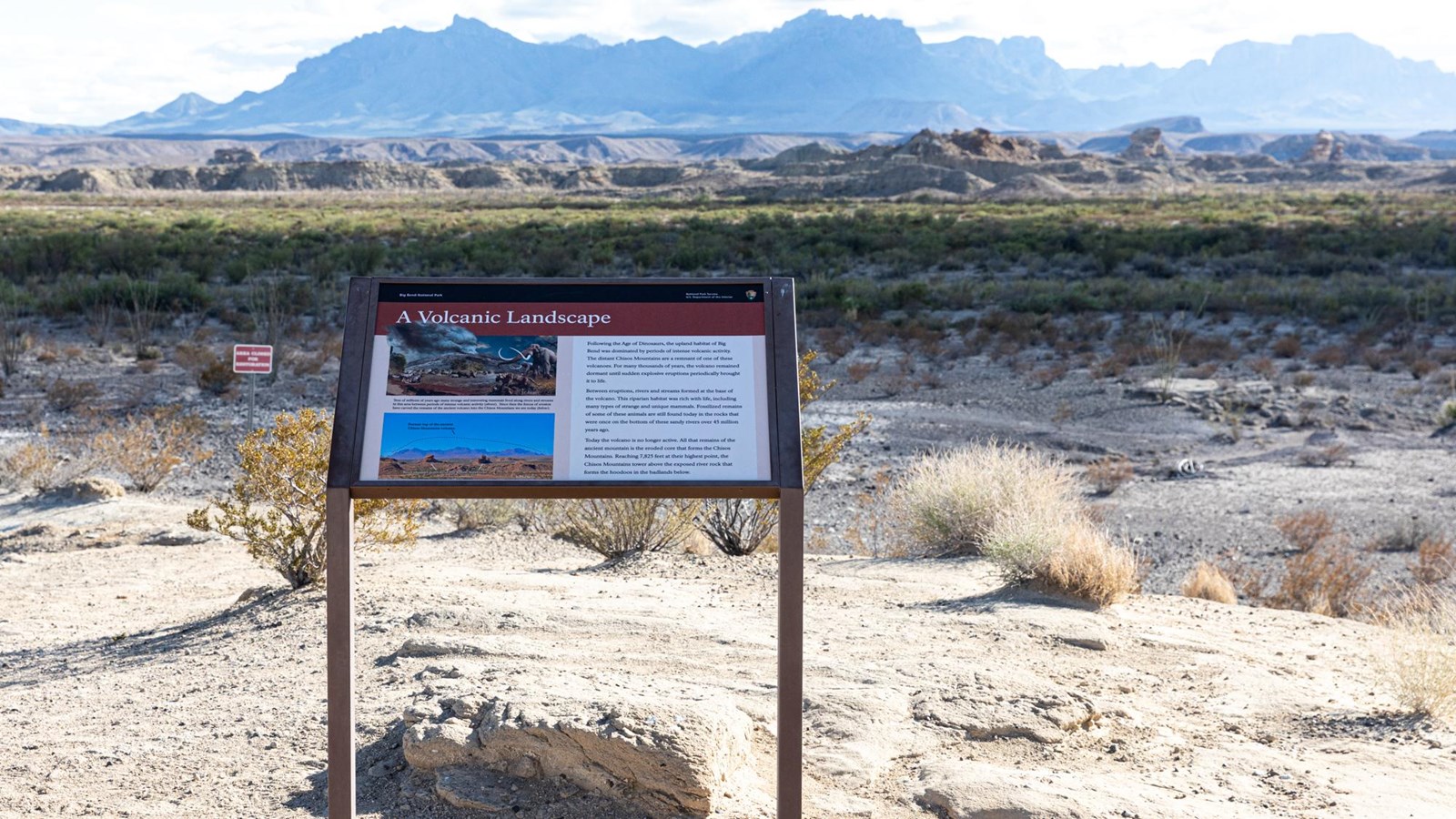Last updated: June 23, 2025
Place
Volcanic Landscape Exhibit

NPS/CA Hoyt
Quick Facts
Location:
Big Bend National Park
Amenities
7 listed
Accessible Sites, Historical/Interpretive Information/Exhibits, Parking - Auto, Picnic Table, Restroom - Accessible, Scenic View/Photo Spot, Toilet - Vault/Composting
Can you imagine standing in this location and viewing a lush riparian habitat, instead of the dry desert of today? Visit this exhibit to get an idea of what flora and fauna existed in Big Bend millions of years ago.
The text on this exhibit reads, "Following the Age of Dinosaurs, the upland habitat of Big Bend was dominated by periods of intense volcanic activity. The distant Chisos Mountains are a remnant of one of these volcanoes. For many thousands of years, the volcano remained dormant until sudden explosive eruptions periodically brought it to life.Between eruptions, rivers and streams formed at the base of the volcano. This riparian habitat was rich with life, including many types of strange and unique mammals. Fossilized remains of some of these animals are still found today in the rocks that were once on the bottom of these sandy rivers over 45 million years ago.Today the volcano is no longer active. All that remains of the ancient mountain is the eroded core that forms the Chisos Mountains. Reaching 7,825 feet at their highest point, the Chisos Mountains tower above the exposed river rock that forms the hoodoos in the badlands below.
Caption 1: Tens of millions of years ago many strange and interesting mammals lived along rivers and streams in this area between period of intense volcanic activity (above). Since then the forces of erosion have carved the remains of the ancient volcano into the Chisos Mountains we see today (below).
The text on this exhibit reads, "Following the Age of Dinosaurs, the upland habitat of Big Bend was dominated by periods of intense volcanic activity. The distant Chisos Mountains are a remnant of one of these volcanoes. For many thousands of years, the volcano remained dormant until sudden explosive eruptions periodically brought it to life.Between eruptions, rivers and streams formed at the base of the volcano. This riparian habitat was rich with life, including many types of strange and unique mammals. Fossilized remains of some of these animals are still found today in the rocks that were once on the bottom of these sandy rivers over 45 million years ago.Today the volcano is no longer active. All that remains of the ancient mountain is the eroded core that forms the Chisos Mountains. Reaching 7,825 feet at their highest point, the Chisos Mountains tower above the exposed river rock that forms the hoodoos in the badlands below.
Caption 1: Tens of millions of years ago many strange and interesting mammals lived along rivers and streams in this area between period of intense volcanic activity (above). Since then the forces of erosion have carved the remains of the ancient volcano into the Chisos Mountains we see today (below).
